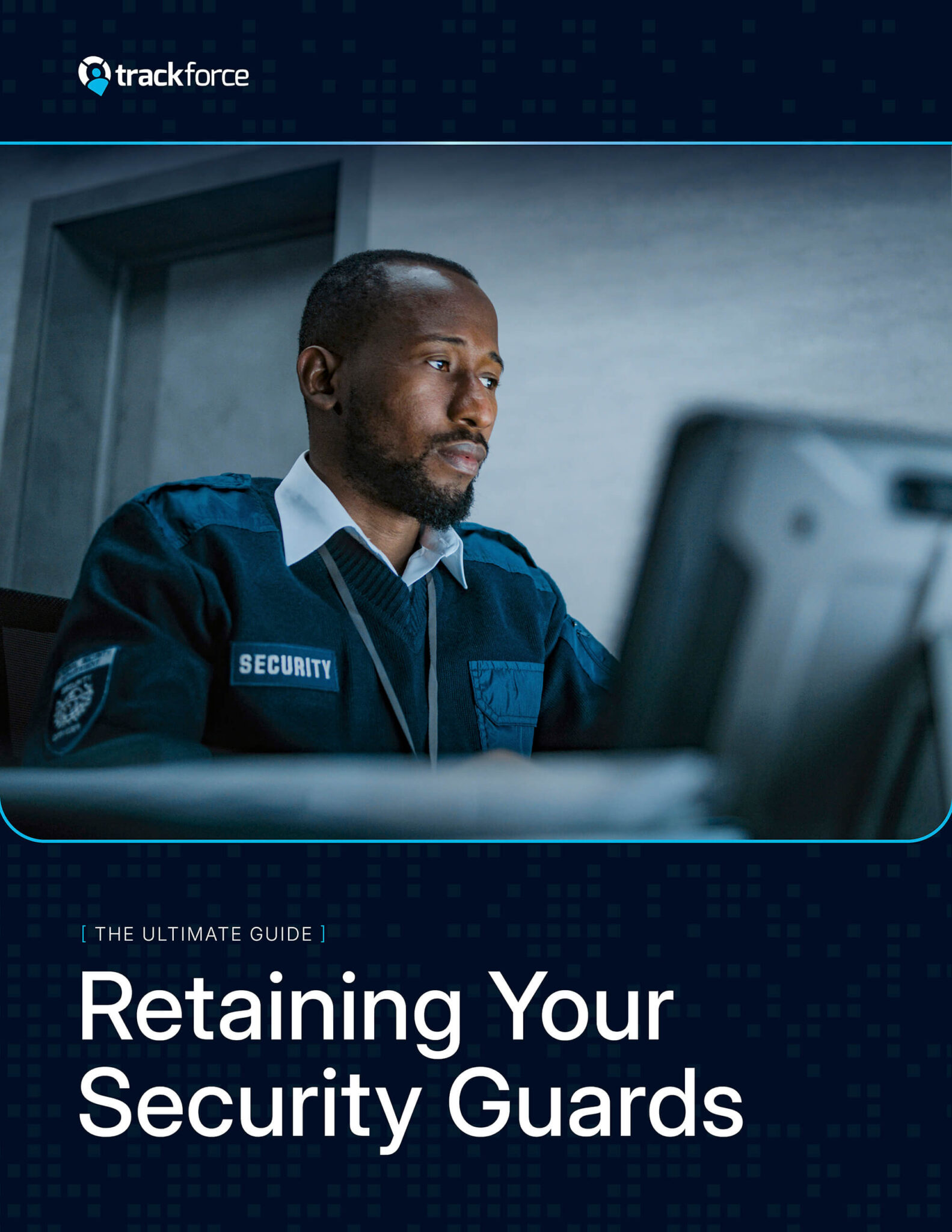
Security Guard Break Laws Demystified: Stay on the Right Side of Compliance
With wage and hour lawsuits costing US companies billions of dollars, there’s an increased interest in staying compliant with security guard break laws. It’s more than just following the letter of the law – with the right program, leaders can also improve their working relationships with their employees.
Here, we’ll outline the legal requirements for security guard breaks, discuss what challenges people face managing compliance across different areas, and show how a security workforce management solution can help.
What are security guard break laws and why do they matter?
Security guard break laws dictate that employers need to give meal and rest times to employees. These laws generally cover the length of breaks, whether they’re paid or unpaid, and what times they need to be offered during a shift. Federal law doesn’t mandate meal or rest breaks, but it does require that shorter rest breaks under 20 minutes be paid. Generally, most specific regulations are set at the state or local level.
For a demanding role like a security guard – which often involves long hours and high-stress situations – breaks are needed. They serve the purpose of keeping people sharp and reducing errors caused by fatigue while on the job.
Ignoring break laws can mean consequences, including financial penalties, back-pay claims, and class-action lawsuits. Other than financial impact, it can also affect whether or not people want to be associated with your company as an employee or client. Properly managing security guard breaks is a responsible business practice that helps with the well-being of everyone involved.
Regional variations in security guard break laws
Security firms need to deal with a patchwork of regulations that vary by state, region, and even within a city. Companies operating in multiple states also need to work through different requirements, which makes it impossible to set a one-size-fits-all policy.
California, for example, is known for its strict laws. It generally requires employers to provide a 30-minute unpaid meal break for shifts over five hours, and a paid 10-minute rest period for every four hours worked. Missing these breaks can trigger pay penalties. In comparison, other states have fewer specific requirements or none at all, leaving it to company policy. This complicates scheduling, payroll, and compliance management.
For a complete overview, the U.S. Department of Labor publishes a guide to state-specific meal and rest break laws. Here are some examples of how laws differ state-to-state:
- California: 30-min unpaid meal break for 5+ hour shifts. 10-min paid rest break per 4 hours.
- New York: 30-min unpaid meal break for shifts over 6 hours that extend over the noon meal period.
- Illinois: 20-min unpaid meal break for 7.5+ hour shifts.
- Texas: No state law requiring breaks. Federal law applies.
Source: https://www.dol.gov/agencies/whd/state/meal-breaks
Challenges of tracking and managing security guard break compliance
Even with a clear understanding of the laws, security firms face challenges in tracking and managing compliance. Common issues include:
- Dynamic scheduling: It can be complicated to coordinate breaks during 12-hour shifts, overnight patrols, or at lone worker sites.
- Manual tracking: Relying on paper timesheets or manual check-ins can lead to human error, making it difficult to prove that breaks were offered…and taken correctly.
- Interrupted breaks: Guards’ meal breaks can be easily interrupted by an on-site arrival or incident. If it isn’t properly recorded and compensated, this can lead to wage and hour claims.
- Varying rules: It’s difficult to adjust schedules and payroll to account for different compliance rules across multiple client sites.
These challenges are exactly why a security workforce management platform is a helpful compliance tool for companies. With accurate and automated tracking, firms are less exposed to legal and financial risk.
How security workforce management solutions simplify break compliance
Security workforce management solutions are designed to deal with the complexity of break law compliance by automating the entire process. These platforms get rid of guesswork and manual data entry, so there’s a reliable record.
Features that simplify compliance include:
- Automated scheduling and alerts: The system can be configured with local break laws, automatically scheduling compliant breaks and sending real-time alerts to guards and supervisors when a break is due, missed, or interrupted.
- Real-time tracking: GPS and geofencing capabilities confirm that guards are taking their breaks in designated areas and for the correct duration – all logged digitally.
- Custom rules: For firms working in multiple states, the platform can store and apply different rule sets based on the location of the worksite. This way, they can be compliant for each location.
- Digital audit trails: Every scheduled, taken, or missed break is time-stamped and recorded, creating an audit trail that can be used to defend against potential legal claims.
| “TrackTik has revolutionized how we handle break management, flawlessly navigating California’s stringent labor laws through automation and dramatically reducing compliance risks.” |
| Ashlee Cervantes- CEO at Guardian Protection Force |
Thanks Best practices for managing security guard break compliance
To build a compliant company, work these best practices into your daily management:
- Stay informed: Review and update your info on federal, state, and local labor laws. Legal requirements can change, and unfortunately – ignorance is not a defense.
- Train your team: Make sure supervisors and guards understand the break policies, their rights, and how to use your system to correctly log their breaks.
- Use security workforce management software: Use technology to automate tracking, scheduling, and reporting. This gives real-time visibility and a defense against compliance claims.
- Audit schedules: Review schedules and compliance reports to identify patterns of missed breaks or potential issues before they turn into a bigger problem.
- Encourage communication: Create a workplace where guards feel comfortable reporting interrupted or missed breaks. Transparency builds trust!
Protecting your team and gaining employee trust
Overall, break management is direct investment in your most valuable asset – people. When security guards know that their employer respects their time and well-being, it creates a better work environment.
And…this trust translates directly into improved performance. Well-rested guards are more alert, more engaged, and provide better service to your clients. This culture reduces employee turnover and becomes a real asset in a competitive market. Proper break management (and the associated employee care) is a component of building a successful security firm.
For security operations, it’s important to understand security guard break laws, work through regional changes, and implement tracking systems. The risks of non-compliance are too high to ignore, but by using best practices and software solutions, you can protect your business from legal threats and protect your team’s welfare.
Take the Next Step Toward Seamless Compliance
Navigating security guard break laws doesn’t have to be a constant source of stress and legal risk. With the right knowledge, tools, and approach, you can transform compliance from a burden into a competitive advantage that protects both your business and your team.
Get Your Complete Meal Break Compliance Guide
Want to dive deeper into the specifics? We’ve created a comprehensive meal break guide that breaks down state-by-state requirements, provides compliance checklists, and offers practical templates you can implement immediately. This detailed resource will help you stay current with changing regulations and build foolproof processes for your security operations.
Download Your Free Meal Break Compliance Guide
See TrackTik in Action
Ready to experience how automated workforce management can eliminate compliance headaches? TrackTik’s platform is specifically designed for security companies like yours, handling everything from complex scheduling across multiple jurisdictions to real-time break tracking and digital audit trails.
Don’t let manual processes put your business at risk. Schedule a personalized demo to see how TrackTik can help you:
- Automate break scheduling based on local laws
- Track compliance in real-time across all locations
- Generate bulletproof documentation for audits
- Reduce administrative overhead while improving employee satisfaction
Your security guards deserve proper breaks, your clients deserve reliable service, and your business deserves protection from costly compliance issues. Let TrackTik show you how easy compliance can be.
Frequently Asked Questions About Security Guard Break Laws

Want to understand all the factors driving guard turnover?
Download our comprehensive “Ultimate Guide to Retaining Your Security Guards” for actionable insights.
